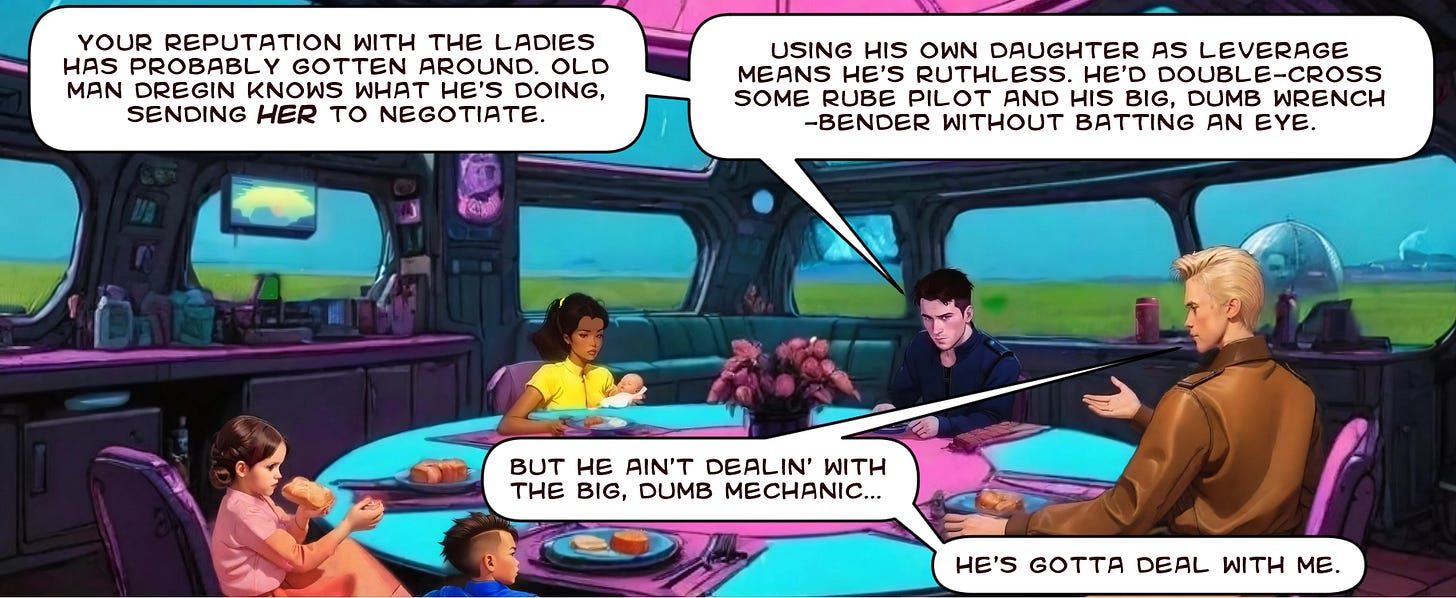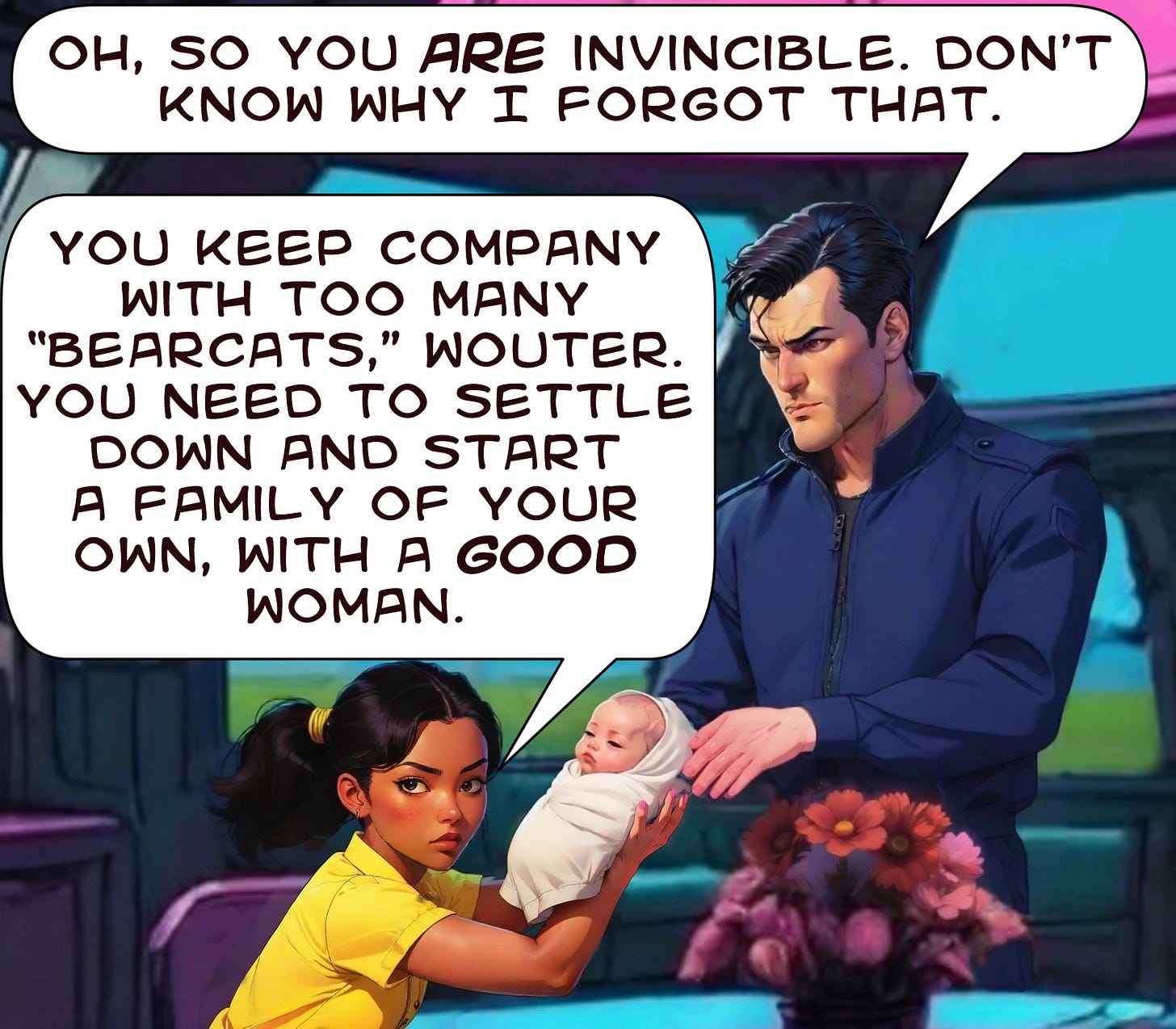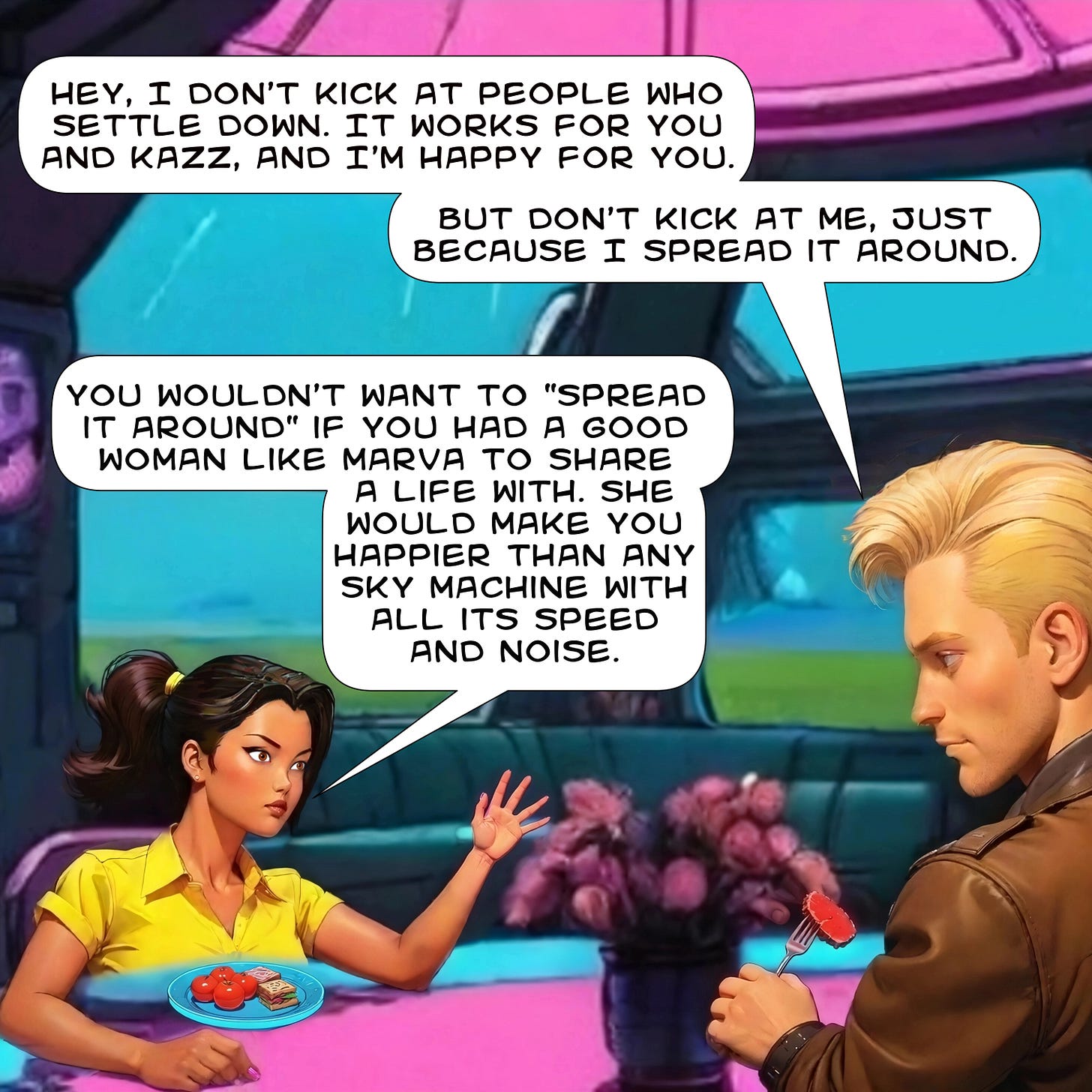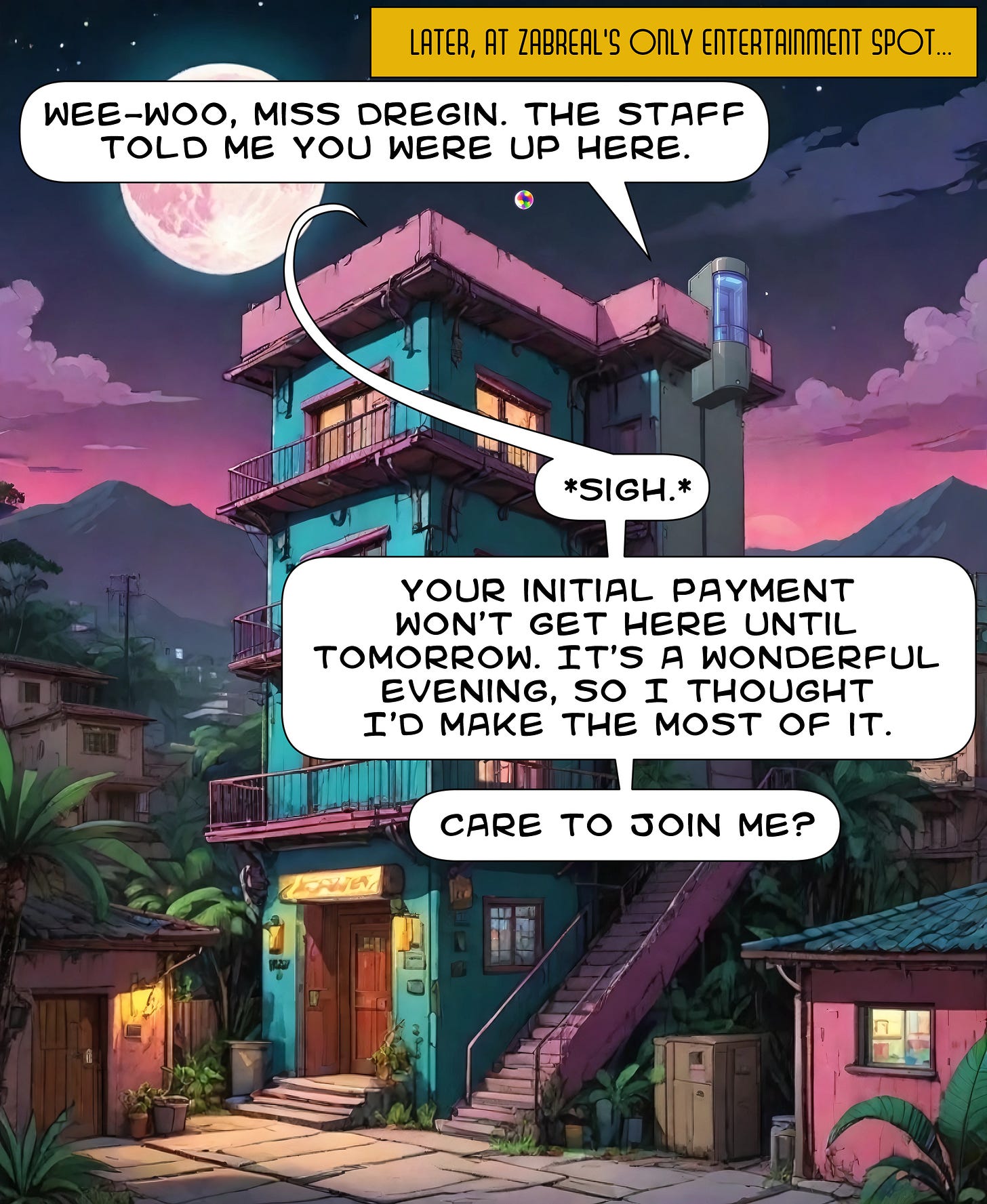I had finished my Great American Novel(s) and they were being published, enjoying more success than I thought they would, all things considered. I could breathe a little easier as I turned to face the graphic novel quest once again.
To summarize: human artists had proved dense, stubborn, undependable prima donnas. (Much of that is documented in the previous articles of this series.) Upon the recommendation of others, I tried Stable Diffusion, and though I didn’t have to pay it a page rate, it was also dense and stubborn. The biggest hurdle was training models. I wasted untold months trying to make that work and was thoroughly stymied.
So what to do? Re-learn how to draw and do it myself. I knew I would never be as good as many of the comic book artists working out in the indieverse. But I could draw better than some of them already working. If my writing was strong enough, people would enjoy my work even if my illustration was minor league, I figured.
The biggest obstacle was time. Time to learn drawing again. Time to learn the software I would be using. Time to actually sketch, ink, and color the panels and covers. All in between a day job, family obligations and a bazillion other tasks that need my attention every week.
ScruffyNerf told me about Stable Diffusion 3.0 in beta, and perhaps the new improved SD would be easier to train models in. (Easier? I’d settle for possible.) I started reading about it and got excited. Maybe it would be the tool I could use to push my GN projects across the starting line.
In the mean time, there was SDXL, and an interface called ComfyUI, that I saw some tutorials for. I decided to check them out. After doing so, I downloaded/installed both. ComfyUI is customizable, so if you know what you’re doing (which I don’t) you can probably get SDXL to go where no SD has never gone before. Some people said it’s an easy interface to use, too.
It is not.
Nontheless, I invested some free time in experimentation. There’s a few e-books I have out there (short fiction) that need better covers. So one task I gave SDXL was to generate an alternate color image for Thus Spake the Bard—an ebook that has never received a review, and hardly any sales. Possibly due to the existing cover image.
What I found was, SDXL was better than SD 1.5 and 2.1 by degrees. Not a quantum leap forward, in my experience. It ignored that somebody was supposed to be walking alongside the knight. Also, the knight has no weapons. So there’s the same issue with it ignoring details in the prompt (just like human artists). Overall, it was less wonky than what I could have gotten from 1.5/Auto1111 after several tries, but not revolutionary.
Then ScruffyNerf hit me with the big bomb: There was a new program called Dashtoon Studio specifically designed to create comics, and it could more-or-less train a model based on one image.
I say more-or-less because the consistency of a character’s look is not exactly what I hoped for. But this was, for me, a huge improvement over SD.
Maybe I can use Dashtoon Studio to finish Privateer, sez I. When I get the last panel uploaded on Arktoons, then I’ll be fluent enough to go back and re-create the human-drawn, black & white panels in color. And then I’ll be ready to assemble it all as both a print and E-Book version for publishing.
Each of the panels you see here took hours to get to look like they do. Take Yaoli—it would part her hair on the left, the right, and in the middle, but never the same way twice. Same with Kazz and Wouter’s hair, no matter what I put in the prompt. I had to tweak the color of Wouter’s jacket every time. It put different patches/insignia on every time, changed the cuffs and collar, etc. Yaoli’s blouse, Kazz’s jumpsuit, different every time. It kept lightening Yaoli’s complexion. I had to do extensive inpainting, and image editing, to get what consistency there is, panel-to-panel.
It generated an interesting futuristic kitchen for me to sit the characters at, but it would not reproduce that kitchen at a different angle. It insists on every character’s eyes gazing at the viewer, rather than another character you prompted them to look at. It had Yaoli’s torso growing out of the kitchen table at one point (the kind of issue that is common in Stable Diffusion). I had to redraw hands, hair and eyes myself, after which it would screw them up again.
The absolute worst was me trying to get it generate the rooftop restaurant. I might have spent longer on that than on all the rest of them combined. I tried real-time drawing to help it along, and it misinterpreted everything I drew. Finally I gave up and let it generate an establishing shot (which also doesn’t look like what I wanted) of the hotel instead of showing the characters on the rooftop restaurant.
I’m not satisfied with what I got. However, I’m hoping Dashtoon will improve while I work on other stuff. I’m considering downgrading from my current subscription back to free, until it either improves, or I find some way to trick it into giving me less trouble. Or maybe a different program will come along that works better for me.
Stable Diffusion Version 3 was released, and however good it may be, I won’t be using it.
Meanwhile, ScruffyNerf and others have been experimenting with ComfyUI, and extensions/add-ons have been developed, which brings that combo a lot closer to viability for an A.I. illustrated comic. Because of the customizable nature of ComfyUI, it is evidently very powerful.
I’ve watched some demos of SDXL/ComfyUI by proficient users, and it’s impressive. That software can, for free, provide much better results than what I’m paying for Dashtoon Studios to do. Also, I’m paying for Dashtoon Studios but not using it at present because I’m busy with another project.
Next time: Human artists redeem themselves; I learn to “flat” and color; and the superhero project finally gets off the ground after sitting static on the runway for years.









Reading this whole saga hurts me. I went through a lot of the same stages as you to turn a book into a graphic novel, only I didn't have the money to throw at other artists. I had 1 hour a day in which to draw, so I set out to maximize that time. I got on Pinterest and began doing every art tutorial. I studied eyes and noses, figure drawing, clothing folds, armor, hands, hair, etc. If you go to my deviantart at michellekessler, then scroll to the bottom of my gallery, you'll see how abysmal I was. But I kept on and on. It's been seven years now and I'm finally approaching some level of competence. Just saying, don't give up!
Loving to tag along for this wild ride!